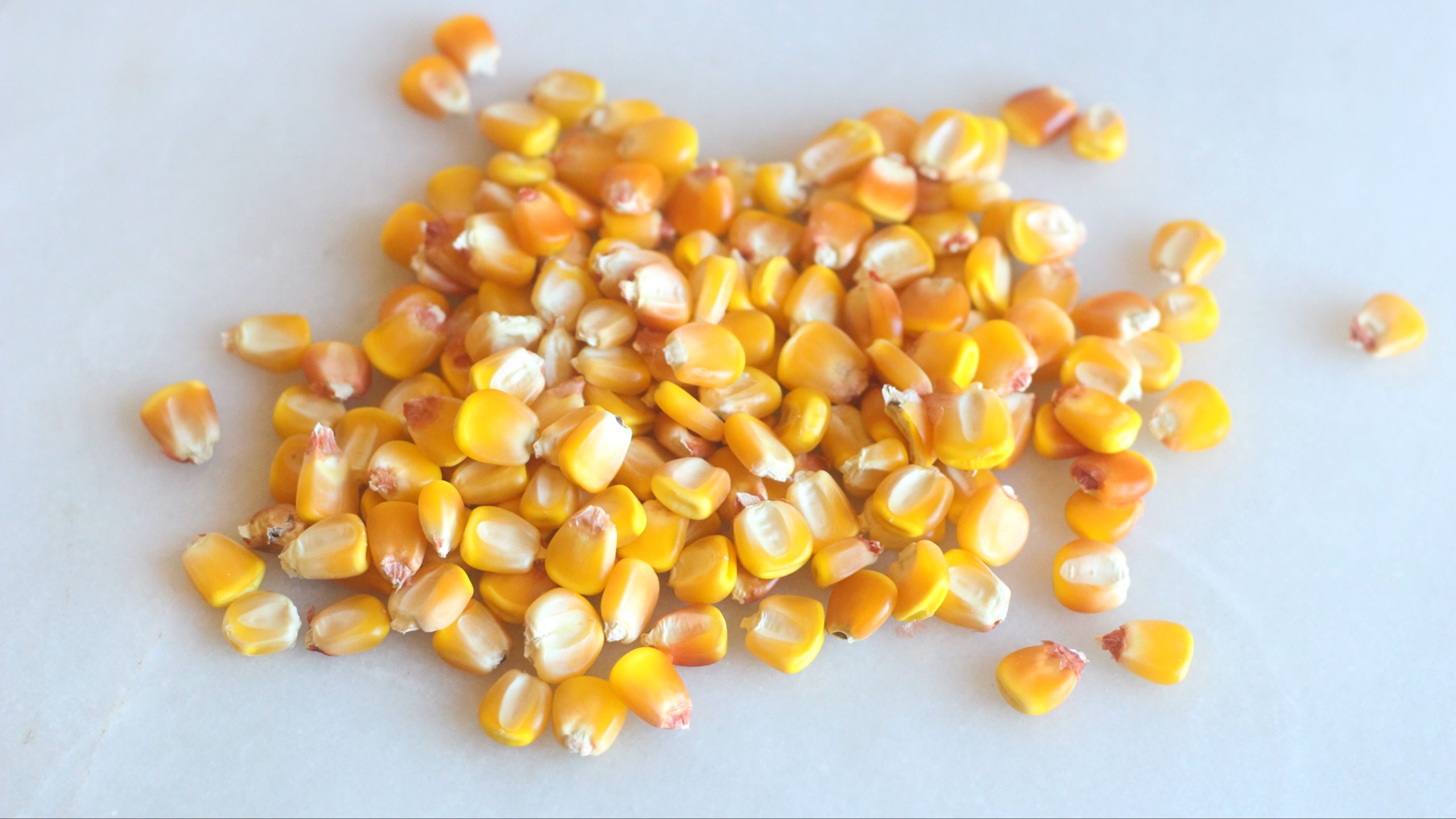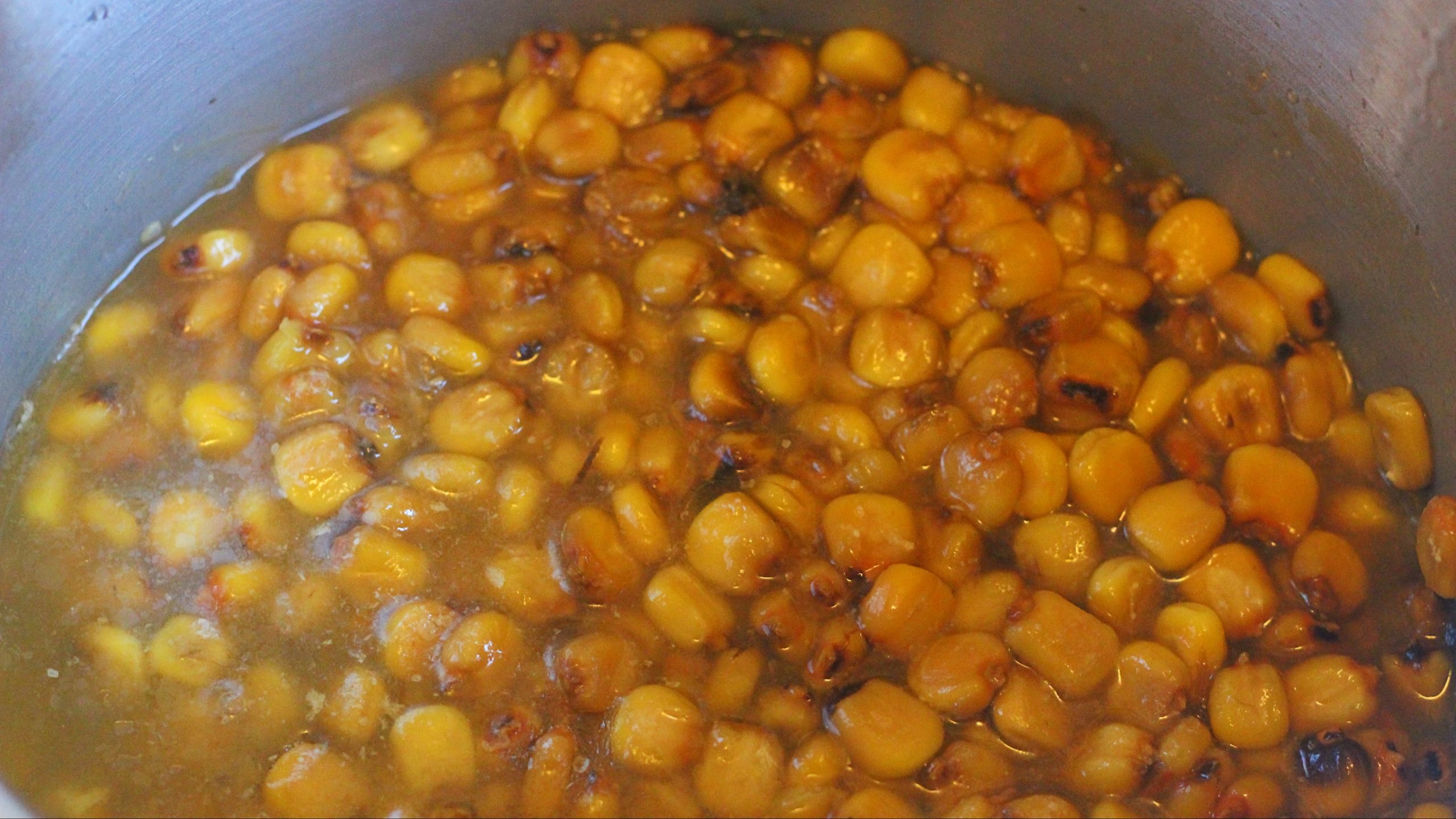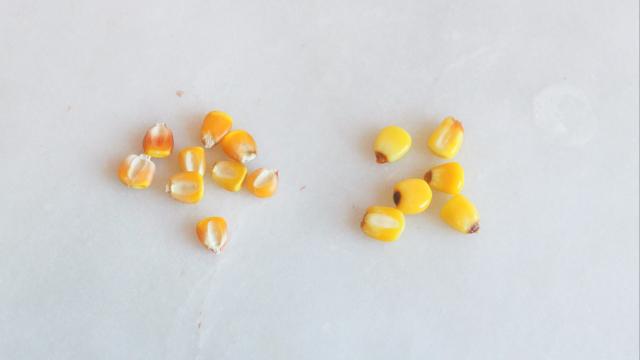Even if you haven’t eaten straight up nixtamal (known in the Southern U.S. as “hominy”), you have most likely consumed nixtamalised corn in one form or another. Tortillas, masa dough, proper grits, and even Fritos are all made with corn that has undergone nixtamalisation, a process wherein corn is soaked in an alkaline solution to make it more digestible, more nutritious, and — in my opinion — more delicious.
In an excerpt from his book Beautiful Corn, Anthony Boutard explains how nixtamalisation makes certain nutrients in corn more available:
Steeping the grain in an alkaline solution makes it more digestible and, most important, more nutritious. In untreated corn, the niacin (vitamin B3) it contains is bound to a large molecule that does not break down in our gut. The alkaline treatment splits off this molecule, making the niacin available in the human digestive tract. In addition, corn steeped in slacked lime has a higher calcium content than raw corn, especially important in the pre-Columbian culture without any dairy animals providing this essential mineral in the form of milk and cheese.
Native Central Americans used slaked lime (calcium hydroxide) — called “cal” in Spanish — to achieve this, while Native North Americans used wood ash; each process contributed its own minerals to the dish. Nowadays, industrially processed hominy is nixtamalised with food-grade lye (sodium hydroxide), which contributes a soda-y, sodium-heavy flavour and… not much else.
Fortunately, making your own nutritious, intensely fragrant nixtamal is extremely achievable. You can make it with calcium hydroxide, which makes all of that niacin Boutard talked about readily available while also contributing — I bet you can guess this one — calcium into the mix (the nix?).
In addition to nutrients, which I’ve heard are important, nixtimalisation gives the corn a divine aroma and a fun, chewy texture. The nutty, sweet, extra corny and puffy kernels are absolutely intoxicating and, once transformed, can be used to make grits (my personal favourite), pozole, tortillas, or tamales. Or you can just serve it as a simple side.

How to make nixtimal (aka homily)
First, you will need some dried corn. You can technically nixtamalise any corn (even popcorn), but some varieties are better suited to the process than others. Anson Mills sells a very bougie yellow corn expressly for this purpose, but Hickory King and Boone County White are also banging.
Once you have acquired your corn, you will need some calcium hydroxide, which you can find as “pickling lime” wherever pickling supplies are sold, or you can get some online. One you have your corn and your corn chemical, the only other things you’ll need is water (some recommend distilled, but I used Portland tap water to fine result) and a nonreactive pot (stainless steel or enameled — not aluminium, which will etch).
Transforming corn into hominy is a fairly hands-off process, but it does require a tiny amount of very simple maths. First, you need to weigh your corn. Two cups of my bougie-arse yellow corn came out to 350 grams, a nice, round number that made me happy. Next, calculate 1% of your corn weight (3.5 grams in my case) and weight out that amount of calcium hydroxide. Finally, take your corn weight and double it, then measure out that amount of water. If you weighed everything in grams, just change the units from grams to millilitres (because one millilitre of water weighs one gram). Thusly, I used 700 millilitres of water.
Add the corn and water to your pot, sprinkle the calcium hydroxide on top, and stir with a wooden spoon to disperse the powder. Bring the water to a boil, reduce to a steady simmer, and cook for 30 minutes to an hour. I know this sounds like a large window, but it really does depend on the type of corn you’re working with. What you want is a “medium rare” kernel. A paring knife should slice through the outside with ease, but meet some resistance at the starchy, white endosperm. Start monitoring the pot at 30 minutes, checking every 10 or 15 after until it’s done.
Once you hit that medium-rare end point, take the pot off the heat, cover it, and let it sit overnight, or for at least eight hours. If a lot of the water was absorbed by the corn and it looks a little dry, just add enough to bring the water level up about a half inch over the corn.

In the morning, you will be greeted with hominy suspended in a thick sludge. That’s the dissolved pericarp (the outer coating), and it’s what you want. Rub the hominy/nixtamal/former corn between your palms for a few minutes to get rid of any last pericarp bits (don’t worry about any little black nubs on the end), then rinse in a colander until the kernels look plump and shiny.

Your hominy/nixtamal is now ready to be cooked or processed into masa, grits, or whatever else you desire. Fresh hominy will keep one week in the fridge or three months in the freezer, so you have plenty of time to decide its fate.

Leave a Reply
You must be logged in to post a comment.